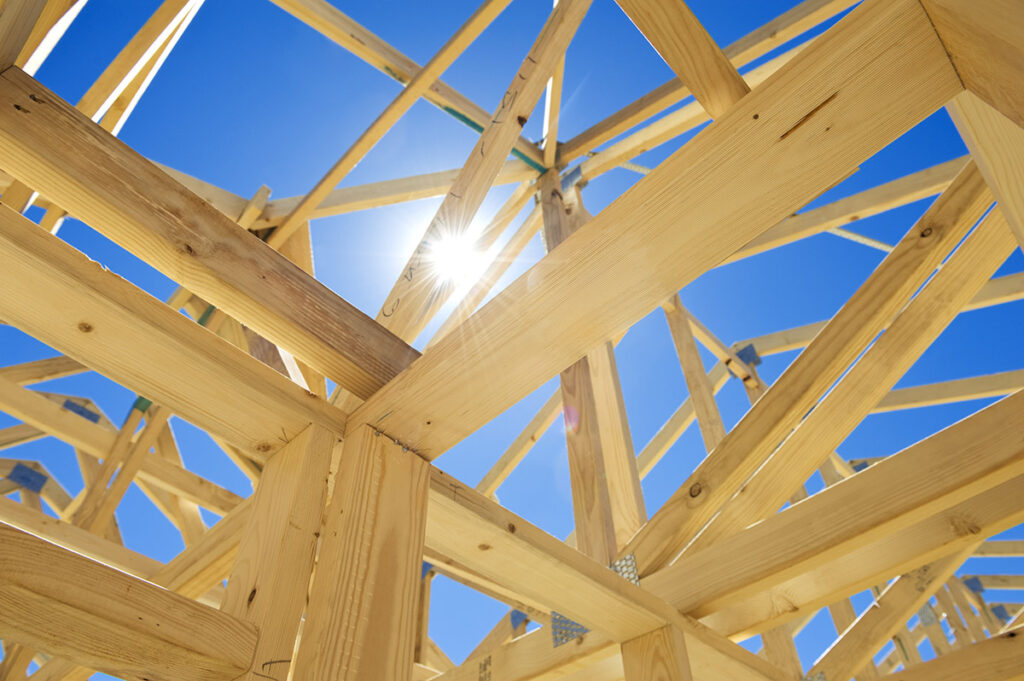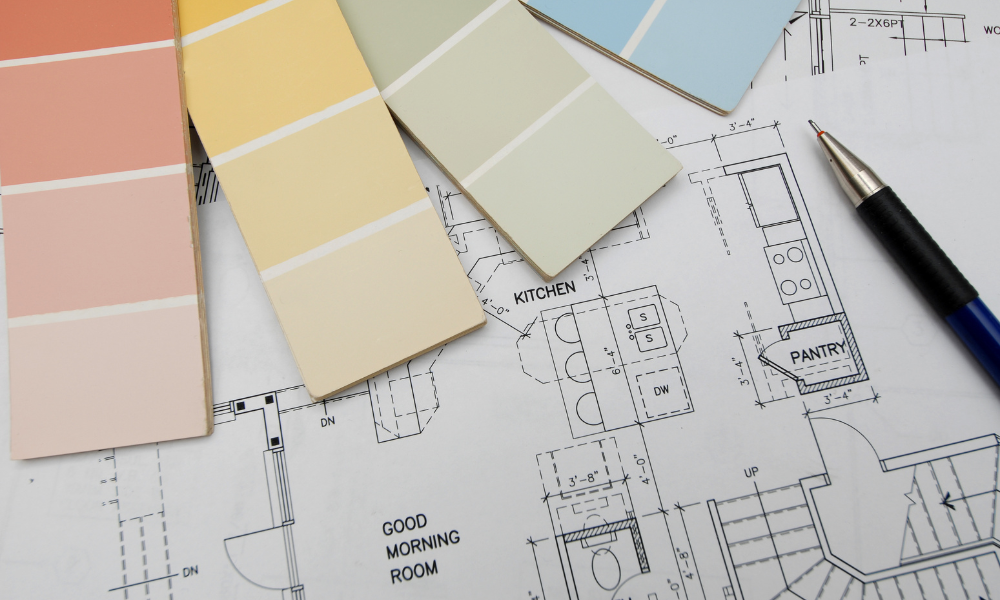
ADU homes, short for Accessory Dwelling Units, offer a creative and flexible solution to the housing crisis. These are secondary housing units located on a single-family residential lot. They come in various forms: detached ADUs, garage conversions, attached ADUs, basement conversions, and internal ADUs.
In simple terms:
– Detached ADU: A standalone unit, also known as a backyard cottage or granny flat.
– Garage Conversion: An existing garage transformed into a living space.
– Attached ADU: An addition to the main house, like a bump-out.
– Basement Conversion: Underutilized basement converted into a living area.
– Internal ADU: A partitioned section of the primary house, other than the basement.
ADUs offer several advantages, from providing rental income to offering space for a growing family. They are ideal for homeowners looking to maximize their property investment or provide additional living space.

What is an ADU?
An Accessory Dwelling Unit (ADU) is a secondary housing unit on a single-family residential lot. Think of it as a mini-home that shares the same property as your main house.
ADUs are self-contained, meaning they have their own kitchen, bathroom, and living area. They are independent living spaces, designed to provide additional housing options without needing to buy a new property.
Key Characteristics of ADUs
- Secondary Housing Unit: ADUs are always secondary to the main house. They can’t be sold separately but can be rented out.
- Self-Contained Unit: Each ADU has its own kitchen, bathroom, and living space, making it a complete home within a home.
- Variety in Form: ADUs can be detached units, garage conversions, basement apartments, or even part of the main house partitioned off.
- Smaller Size: ADUs are typically smaller than the primary residence, often ranging from 600 to 800 square feet.
Common Terms for ADUs
- Granny Flats: Often used to house aging parents.
- In-Law Units: Ideal for family members who need close supervision but want their own space.
- Backyard Cottages: Standalone units built in the backyard.
- Carriage Houses: Units built above a garage or workshop.
Why Consider an ADU?
ADUs offer flexibility and can adapt to various needs, whether it is providing a home office, generating rental income, or creating a space for multigenerational living. They also help address housing shortages in urban areas by maximizing the use of existing residential lots.
Case in Point: In Portland, Oregon, ADUs have become a popular way to increase housing density without altering the character of neighborhoods. Similarly, California has passed laws to streamline the ADU permitting process, making it easier for homeowners to build these units.
Michael Kootchick, a seasoned real estate developer, highlights the versatility of ADUs: “They are ideal for homeowners looking to maximize their property investment or provide additional living space.”
Ready to explore more about ADU homes? Next, we’ll dive into the various types of ADUs and how each can fit different needs.
Types of ADU Homes
ADU homes come in many forms, each offering unique benefits. Let’s explore the most common types and how they can fit different needs.
Detached ADU
Detached ADUs are standalone units built on the same lot as the main house. These are often referred to as backyard cottages, granny flats, or laneway houses.
Benefits:
– Privacy: Offers complete independence from the primary residence.
– Flexibility: Ideal for rental income or housing family members.
– High Value: Often increases property value significantly.
Garage Conversion ADU
A garage conversion ADU transforms an existing garage into a livable space. These can be called garage apartments or carriage houses.
Benefits:
– Cost-Efficient: Lower construction costs since it uses an existing structure.
– Quick to Build: Faster completion compared to new builds.
– Versatile Use: Can serve as a rental unit or guest house.
Attached ADU
Attached ADUs, also known as bump-out ADUs, are added directly onto the main house. They share walls and benefit from easier access to utilities.
Benefits:
– Shared Walls: Easier and cheaper utility connections.
– Seamless Integration: Blends with the existing structure.
– Convenience: Close proximity to the primary residence.
Benefits:
– Maximizes Space: Utilizes existing square footage.
– Affordable: Lower cost than building a new structure.
– Convenient: Easy access to utilities.
Internal ADU
Internal ADUs convert part of the main house into a separate living unit. This can include partitioned spaces or attic conversions.
Benefits:
– Efficient Use of Space: Makes use of existing rooms.
– Lower Costs: Less expensive than building a new structure.
– Flexibility: Can be used for various purposes like a rental unit or guest space.

Next, we will explore the benefits of ADU homes and how they can add value and flexibility to your property.
Benefits of ADU Homes
Flexible Living Space
ADU homes offer flexible living spaces that can adapt to your needs. Whether you need a home office, a hobby studio, or guest accommodations, an ADU can be the perfect solution.
- Home Offices: With more people working from home, having a separate workspace can boost productivity and maintain work-life balance.
- Hobby Studios: Artists, musicians, and hobbyists can use ADUs as dedicated spaces to pursue their passions without disrupting the main household.
- Guest Accommodations: ADUs provide a comfortable and private space for houseguests, ensuring they have their own area to relax.
Rental Income
One of the most appealing benefits of ADU homes is the potential for rental income. Renting out your ADU can generate passive income and offer tax benefits.
- Passive Income: Renting your ADU can bring in a steady stream of income. Depending on your location, you could charge anywhere from $1,200 to $2,200 per month.
- Tax Benefits: You can write off many expenses, including depreciation and startup costs. This can make the financial aspect of owning an ADU even more attractive.
Multigenerational Living
ADU homes are ideal for multigenerational living, providing a way for families to stay close while maintaining independence.
- Aging Parents: An ADU can serve as a caregiver dwelling for aging parents, offering them a safe and comfortable space while keeping them close to family.
- Young Adults: Young adults not ready to leave the nest can benefit from the privacy and independence of an ADU while saving money.
- Caregiver Dwellings: If a family member requires ongoing care, an ADU can house a caregiver, ensuring they are nearby but not intruding on family life.
Environmental Benefits
ADU homes are often more environmentally friendly than traditional housing options.
- Small Footprint: Smaller living spaces generally mean a smaller carbon footprint.
- Energy Efficiency: Modern ADUs can be built with energy-efficient materials and systems, reducing overall energy consumption.
- Sustainable Housing: ADUs promote sustainable living by utilizing existing infrastructure and reducing the need for new land development.
Economic Benefits
ADU homes offer several economic advantages, making them a smart investment.
- Utilize Existing Infrastructure: ADUs make use of existing utility connections and infrastructure, which can save money and resources.
- Reduce Urban Sprawl: By adding living space within existing neighborhoods, ADUs help reduce the need for new suburban developments.
- Affordable Housing: ADUs provide a cost-effective housing solution for both renters and homeowners, contributing to more affordable housing options in your community.
Social Benefits
ADU homes can enhance the social fabric of a community by promoting housing diversity and community integration.
- Neighborhood Character: ADUs can blend seamlessly into existing neighborhoods, preserving the community’s character.
- Housing Diversity: They offer various living options, catering to different needs and lifestyles.
- Community Integration: ADUs can help create more inclusive and resilient communities by providing housing solutions that meet diverse needs.
In the next section, we’ll dive into the costs of building an ADU, including construction costs, utility connections, permits, and financing options.
Costs of Building an ADU
Building an ADU home involves several costs. Let’s break down the main expenses: construction costs, utility connections, permits, and financing options.
Construction Costs
Construction costs vary depending on the type of ADU you choose:
- Detached ADU: These standalone units, like backyard cottages or granny flats, can cost anywhere from $50,000 to over $200,000. The price depends on size, materials, and finishes.
- Garage Conversion: Converting an existing garage into a living space is generally cheaper, starting at around $5,000. However, costs can rise depending on the quality of the conversion.
- Attached ADU: Adding a unit directly onto your home can range from $30,000 to $150,000. This option often includes shared walls, making utility access easier.
- Interior Conversion: Converting a basement or attic can be a cost-effective option, starting at about $10,000. This route typically involves fewer structural changes.
Utility Connections
Connecting utilities to your ADU is crucial and comes with its own set of costs:
- Electricity: Most ADUs connect to the main house’s electrical system. However, you might need an upgraded meter, which can add to costs.
- Plumbing: Adding or separating plumbing can be expensive, especially for detached units. Expect to pay for new pipes and possibly a new water heater.
- Internet and Cable: These services can usually be extended from the main house, but separate accounts might be required, depending on local regulations.
Permits and Zoning
Permits and zoning laws can significantly impact your project:
- Local Regulations: Zoning laws vary by location. Some areas have strict rules about setbacks, height limits, and parking.
- Building Codes: These codes dictate how your ADU must be constructed, covering everything from ceiling height to required parking spaces.
- Permits: You’ll need various permits, including building, electrical, and plumbing permits. Fees can add up, especially for larger units over 750 sq. ft.
Financing Options
Financing your ADU can be daunting, but there are several options:
- Cash-Out Refinance: This allows you to take out a new mortgage for more than you owe, using the extra cash to fund your ADU.
- Home Equity Loan: Borrow against the equity in your home to finance your ADU project.
- HELOC: A Home Equity Line of Credit lets you borrow as needed, making it a flexible option for ongoing construction costs.
- Construction Loan: While not offered by all lenders, a construction loan can provide the funds needed to build your ADU.
By understanding these costs and options, you can better plan for your ADU project. Next, we’ll guide you through how to get started with ADU homes, from planning and design to permits and construction.
How to Get Started with ADU Homes
Planning Your ADU
Getting started with an ADU begins with careful planning. The first step is a property assessment. This will help you understand if your property can accommodate an ADU and what type would be best suited.
- Intended Use: Determine the primary purpose of your ADU. Will it be a rental unit, a home office, or living space for family members? Your intended use will guide many of your decisions.
- Space Availability: Assess the available space on your property. Consider factors like existing structures, yard size, and local zoning laws.
Designing Your ADU
Once you’ve planned your ADU, the next step is designing it. This involves selecting an architectural style, ensuring universal design for accessibility, and incorporating eco-conscious design elements.
- Architectural Style: Your ADU should complement the main house. Consistent design can add value and aesthetic appeal.
- Universal Design: Features like wider doorways and step-free entrances can make your ADU accessible for everyone, including aging parents.
- Eco-Conscious Design: Consider energy-efficient appliances, solar panels, and sustainable materials to reduce your environmental footprint and save on utility bills.
Obtaining Permits
Permitting is a crucial and often complex part of building an ADU. Each city has its own regulations, and it is essential to comply with them to avoid delays.
- Local Jurisdiction: Research your local jurisdiction’s rules and regulations. Some areas have specific ADU ordinances.
- Zoning Approval: Ensure your property’s zoning allows for an ADU. Some areas have relaxed zoning laws to encourage ADU construction.
- Building Permits: Apply for the necessary building permits. This process can be expedited with the help of experienced professionals familiar with local regulations.
Construction Process
The construction process involves several steps, from selecting a contractor to managing the project timeline.
- Timeline: Establish a timeline for your project. This helps in setting realistic expectations and keeping the project on track.
- Contractor Selection: Choose a contractor with experience in building ADUs. They will be familiar with the specific challenges and requirements of ADU construction.
- Project Management: Effective project management ensures that the construction stays on schedule and within budget. Regular inspections will be necessary to ensure compliance with building codes.
OneStop ADU Services
OneStop ADU offers a comprehensive service to make your ADU project as smooth as possible. Their full-service approach includes:
- Pre-Designed Plans: Choose from a variety of pre-designed ADU plans that can be customized to fit your needs.
- Permit Processing: They handle all the paperwork, from design and plan checks to permitting, ensuring a hassle-free experience.
- Time and Cost Efficiency: With a fixed, all-inclusive pricing model and a completion date promise, you’ll know exactly how much your ADU will cost and when it will be finished.
By leveraging OneStop ADU’s expertise, you can avoid time-consuming meetings with architects and contractors, unexpected cost overruns, and frustrating delays. Their promise of no headaches and no surprises makes them an ideal partner in your ADU journey.
Next, we’ll address some frequently asked questions about ADU homes, including zoning laws, property value increases, and space limitations.
Frequently Asked Questions about ADU Homes
Are ADUs allowed in my area?
Zoning laws and local regulations play a big role in determining if you can build an ADU on your property. Each city or county has its own set of rules about where and how ADUs can be constructed.
Key Points:
- Zoning Laws: Check your local zoning laws to see if ADUs are permitted in your area. Some places have relaxed their rules, allowing ADUs in more zoning districts.
- Permit Requirements: You will need building permits to ensure your ADU meets all safety and building codes. This includes permits for electrical, plumbing, and structural changes.
How much value does an ADU add to my property?
ADUs can add significant value to your property, but the exact amount can vary.
Factors Influencing Value:
– Property Value Increase: Adding an ADU can boost your property value by providing additional living space and potential rental income.
– Rental Income: ADUs can serve as rental units, generating passive income. This extra income can make your property more attractive to buyers.
– Tax Benefits: Depending on your location, you may also receive tax benefits for adding an ADU. However, keep in mind that your property tax assessment may increase due to the added living space.
What are the space limitations of an ADU?
Space limitations are a common concern when planning an ADU.
Considerations:
– Size Restrictions: Local regulations often dictate the maximum size of an ADU. For example, some areas may limit the size to 750 sq. ft. or a percentage of the main house’s square footage.
– Occupancy Rules: There are usually limits on how many people can live in an ADU. For instance, a single-family lot might allow up to four occupants in the ADU.
– Design Considerations: Make the most of your available space by opting for smart design solutions like built-in storage, multi-functional furniture, and open floor plans.
By understanding these key aspects—zoning laws, property value increases, and space limitations—you can better plan and execute your ADU project.
Next, we’ll dive into the costs of building an ADU, including construction expenses, utility connections, and financing options.
Conclusion
ADU homes offer a wide range of benefits, making them an attractive option for many homeowners. From providing flexible living spaces to generating rental income, these secondary units can significantly enhance your property.
Summary and Benefits Recap:
- Flexible Living Space: ADUs can serve as home offices, guest accommodations, or hobby studios, adapting to your changing needs.
- Rental Income: They can generate passive income and potentially offer tax benefits.
- Multigenerational Living: Perfect for aging parents, young adults, or caregivers, ADUs support family integration.
- Environmental Benefits: With a smaller footprint and energy-efficient designs, ADUs promote sustainable living.
- Economic Benefits: ADUs utilize existing infrastructure, reduce urban sprawl, and provide affordable housing options.
- Social Benefits: They enhance neighborhood character and housing diversity, fostering community integration.
Getting Started:
If you are ready to explore the possibilities of an ADU, the first step is to assess your property and understand local zoning regulations. From there, planning your ADU involves considering your intended use, designing the unit, and obtaining the necessary permits.
OneStop ADU Services:
At OneStop ADU, we simplify the process from start to finish. Our comprehensive services include:
- Property Evaluation: We’ll assess your property for ADU feasibility.
- Design and Planning: Choose from our pre-designed plans or customize your own.
- Permitting: We handle all the paperwork and approvals.
- Construction: Our team ensures on-time and on-budget completion.
With our fixed, all-inclusive pricing model and completion date promise, you’ll know exactly how much your new ADU will cost and when it will be finished.
Ready to get started? Explore our backyard house plans and designs to find the perfect ADU for your needs. Let OneStop ADU be your partner in creating a flexible, valuable, and sustainable living space.

